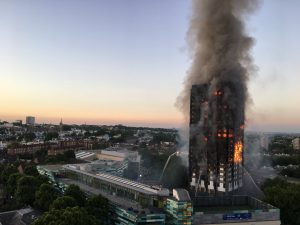On 03 March 2019, five people died in their single-family home in Nuremberg. Four people were seriously injured. The investigation is still ongoing.
Fire experts from the State Criminal Police Office searched for traces throughout the weekend, but even today the cause of the fire has not been clarified. And the investigators are dampening hopes that the information will soon be available because the house was so extremely destroyed by the flames.
Traces of fire can be seen all over the house, even the tiles above a skylight have burned through in the heat. The fire investigators could not determine so far whether the prescribed fire detectors were installed in the house. They concentrate above all on the search for the cause of the fire.
SMOKE ALARMS ARE MANDATORY IN GERMANY!
The smoke detector obligation for private living space applies in all 16 federal states. The smoke detector obligation for private households is regulated in the regional building regulations of the respective federal state. There is written, who has to attach the smoke detector as well as which areas are to be equipped.
International regulations can be found here.
This applies to all federal states:
New buildings and conversions must be equipped with smoke alarms – by the owners. However, in most federal states it is the responsibility of the direct owners, i.e. the tenants, to ensure that the equipment is ready for operation.
If you would like to have further informations, please do not hesitate to contact us.
The owners are also obliged to equip existing buildings, but transitional periods apply here until when smoke detectors must be fitted. The transition periods are regulated differently by each federal state. The only exception is Saxony. Here the smoke detector obligation applies so far only to new buildings and changes, not to the existence.
In view of such tragedies as in Nuremberg it is however beyond question that really everyone should pay attention to the fact that smoke detectors are attached in the appropriate areas.



